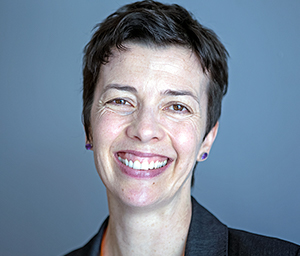Lara Fergus
Question: How can we change social norms to prevent violence against women and girls (VAWG)?
“Ah, easy. Haha. What we have just done in Australia is this big framework on how we prevent violence against women and their children in Australia, and to do that we reviewed all of the national research to date on what is causing violence or driving violence. What we found is that across all of these international studies there are certain factors that emerge consistently and significantly, associated with high levels of violence against women, and some of these are really obvious. They are to do with how we condone or normalise violence against women, how we justify perpetration, excuse perpetrators, blame the victims, and trivialise violence.”
“But some are less obvious and they are to do with how we construct gender roles and the way in which power dynamics between men and women operate. The framework distils if you like exactly what those factors are that have the most significant impact on violence against women and what we have done is, from that create a series of actions that directly address those factors. Now some of them are expressed through social norms, through attitudes, beliefs and behaviours and so forth. Some are expressed through structures and practices and institutional, legislative, political levels, and also in terms of family practices and behaviours.”
“The important point is, we can’t remove social norms from those practices and structures, because practices and structures are creating and reinforcing social norms and vice versa through a vicious circle. But we can address them by promoting very positive, personal identities that are not constrained by gender stereotypes and to do that from a very young age is one of the most effective ways; look at ways through our societies, organisations and communities that we can empower women and encourage them to improve their independence and make sure that we don’t create situations where male control of decision-making is accepted or seen as normal; look at how we can strengthen relationships between men and women and not allow for particularly for almost sex segregated relationships that encourage hostility between or the ideal of the oppositional relationships between the sexes.”
“So how can we achieve that social norm change? Basically, we have to address all of those things. We have to do it in a long-term way and everybody needs to play a part. Government has a role, NGOs have a role, the crisis response sector has a role, schools, workplaces, sporting organisations, everybody has a role to play.”
Question: Could you share with us a success story on social norm change that has contributed to end VAWG?
“There are a handful of studies across the world, evaluations of interventions, where there have been control groups and participant groups and are looking into the future four years, six years, whatever and that have proven a reduction in perpetration and victimisation of violence. Two of those are schools-based programmes: ‘Safe Dates’ in the United States and ‘The fourth R’, as in reading, writing, arithmetic and relationships; and others are community mobilisation programmes. I think SASA! is one example and the other one is ‘Image Microfinance Initiative’.”
“If you’re think about an evidence-based example, there are very few, because, one, prevention and social norm change is a relatively new field and so we are still innovating and working out what models are working, and two, you need to create a reasonably robust model and then you need to test it through an evaluation methodology, and that is quite expensive where you have a control group and where you have a long-term study. So these sorts of evaluation studies are rare. If your question is about what’s proven to reduce violence against women, those are rare, but there are a number of initiatives that are in the room today that have proven to change attitudes and practices and the ways in which organisations and communities work.”
Question: What would you suggest to policy-makers to advance ending VAWG?
“Take it as a long-term initiative, don’t think you can fix this quickly, don’t think that you can do just do one thing like a schools programme and you are going to solve the problem. Take long-term initiatives, get the people who are on the other side of politics involved, and make sure it is a bipartisan, triparty, multi-party endeavour. Plan for sustained work and involve partners from across different areas of government and the non-government sector, so that you have multiple interventions happening at different levels and in different settings, all reinforcing each other for maximum impact.”
About the expert
Lara Fergus
Position: Director of Policy and Evaluation of Our Watch (previously the National Foundation to Prevent VAW and their Children in Australia).
